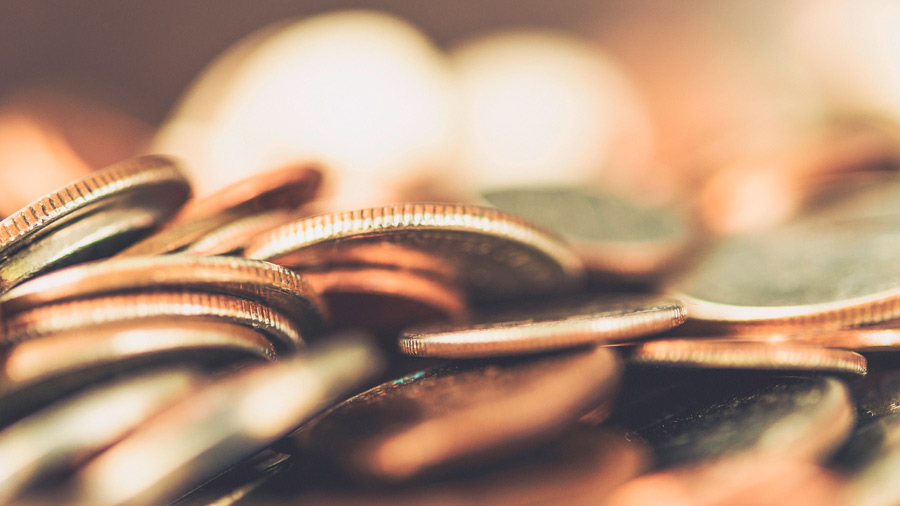Personal Wealth Management / Market Analysis
Putting China's 'Acceleration' in Context
Between the pandemic skewing data and the newest lockdown, we suggest not reading much into the latest economic reports.
If ever you needed proof that economic data are backward-looking, we think China delivered it in spades on Tuesday. The country’s official economic data for January and February, which the National Bureau of Statistics (NBS) combines to remove skew from the Lunar New Year holiday week’s shifting timing, accelerated and beat expectations across the board, as we will show shortly. Yet there didn’t seem to be much cheer amongst financial commentators we follow. Judging from Chinese stocks’ sharp drop on the day, markets remained much more preoccupied with COVID’s resurgence in the country, which has caused stiff new lockdowns in high-tech manufacturing hub Shenzhen.[i] Now, we don’t think this is likely to be a huge headwind for the Chinese or global economy over a meaningful stretch of time, but we do think it helps put the latest data in context.
In a vacuum, the January/February numbers were encouraging, in our view. Retail sales growth accelerated from 1.7% y/y in December 2021 to 6.7%, whilst industrial production sped from 4.3% y/y to 7.5%.[ii] Fixed investment, measured on a year-to-date, year-over-year basis, sped from December 2021’s 2.3% increase from 2020 to 12.2% versus 2021’s first two months.[iii] We think the latter is probably easiest to interpret: As growth slowed last year, Chinese officials ramped up fiscal stimulus efforts.[iv] According to our research, infrastructure spending usually shows up rather quickly in fixed investment, which is a nice early boost, but we think it remains to be seen how much fruit this will bear in the real economy. In our view, that depends on how the new spending recirculates, which takes time.
As for industrial production, we think the acceleration from autumn’s figures likely stems partly from the easing of China’s electricity shortage. Back in October, when European wind and natural gas were in short supply, it triggered a run on energy inputs globally, which cut into China’s supply.[v] The resulting brownouts hampered local factories.[vi] But those problems have largely evened out, thanks in part to Chinese coal companies’ swift response, which enabled factories to return to their normal production schedules as 2022 kicked off.[vii] The easing semiconductor shortage also helped factories that assemble final products.[viii] Additionally, the Omicron-related regional lockdown in Xian ended in January, enabling people there to get back to work.[ix] We think it is also noteworthy that the sharp acceleration occurred despite the factory closures associated with the Beijing Olympics.[x]
But we don’t mean great noteworthy—we mean raise an eyebrow noteworthy. For if there was a sharp year-over-year acceleration despite forced factory outages, to us, that is a sign there are probably some base effect issues at work—weak-ish data from a year ago creating an easier year-over-year comparison point. The fine statisticians at the NBS have been quite clear about this since the pandemic started and have de-emphasised the year-over-year growth rates as a result. In the developed world, we would use seasonally adjusted month-over-month data to avoid year-over-year base effects, but China’s seasonal adjustment methodology is still new, and month-over-month data there aren’t headline statistics. So, the NBS has started highlighting two-year growth rates instead. Last year, they compared results to 2019 in order to strip out the huge swings associated with the early-2020 lockdown. Now, they are encouraging users to compare the current year-over-year growth rates with last year’s two-year growth rates—a novel but sensible approach, in our view. As their press release notes, the January/February growth rate is 1.4 percentage points faster than 2021’s average monthly two-year growth rate.[xi] So, this is an improvement—but not as much of an improvement as the sharp acceleration from December suggests, in our view.
We think retail sales tell a similar story. One, there is a bit of an easy comparison as there were December 2021 lockdowns near Beijing.[xii] Two, there was probably a small boost from the Olympics. Three, if recent history is any indication, easing regional lockdowns probably unleashed some pent-up demand. So yes, there probably was an organic recovery, but in our view, that alone probably doesn’t explain the sharp acceleration from December. The 2.8 percentage point acceleration from 2021’s average monthly two-year growth rate is probably a more meaningful comparison.[xiii] The compound annual growth rate from January/February 2019 to 2022 is just 4.1%, which is rather pedestrian by China’s standards.[xiv] Don’t get us wrong, we think the latest data are a welcome sign of stabilisation after a weak Q4 2021 for China’s big retail sector.[xv] But we wouldn’t overstate it, and whether it has staying power or is a temporary boost from the rapid containment of the December/January COVID wave remains to be seen, in our view.
Either way, locking down Shenzhen will probably hit March data, but we think the extent of the damage is unknowable right now. The current lockdowns in place are scheduled to end on 18 March, and economically, the best-case scenario is if they were to indeed last just one week.[xvi] But given the rest of the world’s experience with Omicron and China’s zero-tolerance approach, a week may be rather optimistic, in our view. The Xian lockdown lasted over a month, consistent with the prior regional restrictions.[xvii] We think the incentive to keep Shenzhen’s lockdown short is quite strong, given the city’s economic importance, but we see some competing goals here. Which will the government prioritise as Xi Jinping aims to nail down an unprecedented third term as president? Economic growth or the perception of COVID containment? We think it is unclear.
Zoom out, however, and we don’t think it makes a huge difference—for China or the world. Whether the latest shutdowns last a week, a month or a tad longer, we think it is unlikely to have much impact on total output and earnings over the next year, two or three. Chinese households and businesses seem to have become increasingly adept at navigating these targeted shutdowns. Large manufacturers say they have shifted production within China to help cushion the blow.[xviii] Additionally, data from around the world over the last two years show fast catch-up growth usually follows shutdowns, which we think should help iron out supply chain-related issues. In our view, nothing here seems hugely worse or longer-lasting than the logistical issues the entire world has dealt with over the last year or so.
When sentiment is stocks’ main mover, then yes, we find short-term developments can influence returns greatly. But over longer periods, our research shows stocks weigh fundamentals—usually over the next 3 – 30 months or so. In our view, the likelihood that COVID setbacks today meaningfully impact activity over that entire period seems low. When stocks are in a stretch of high volatility, every piece of bad news can hit returns, but we think investors who can stay disciplined, strip out emotion and focus on fundamentals usually have a leg up.
[i] Source: FactSet, as of 17/2/2022. Statement based on MSCI China Index return in GBP with net dividend on 15/3/2022.
[ii] Source: FactSet and National Bureau of Statistics of China, as of 15/3/2022.
[iii] Ibid.
[iv] “China Likely to Quicken Fiscal Spending, But Policy Rate Cuts Not on the Cards,” Staff, Reuters, 1/9/2021.
[v] “Global Energy Crisis: How Key Countries Are Responding,” Jennifer Rankin, Oliver Milman and Vincent Ni, The Guardian, 12/10/2021.
[vi] Ibid.
[vii] “Major Coal Miners in China Vow to Boost Output and Cap Prices,” Staff, Reuters, 20/10/2021.
[viii] “World’s Largest iPhone Assembler Says Parts Shortages Are Easing,” Debby Wu, Bloomberg, 9/2/2022. Accessed through the Internet Archive.
[ix] “Chinese City Xi’an Lifts Some Restrictions After Lockdown,” Staff, Associated Press, 16/1/2022.
[x] “China’s Goal for Blue Sky Beijing Winter Olympics Set to Cause ‘Supply-Side Shock’ as Factories Close,” Ji Siqi and Luna Sun, South China Morning Post, 14/12/2021.
[xi] “National Economy Recovered Better Than Expectation in the First Two Months of 2022,” National Bureau of Statistics of China, 10/3/2022.
[xii] “‘Just Want To Go Home’: China’s Xian in COVID Lockdown for 7th Day,” Staff, Reuters, 29/12/2021.
[xiii] Source: National Bureau of Statistics of China, as of 15/3/2022.
[xiv] Source: FactSet, as of 15/3/2022.
[xv] Source: National Bureau of Statistics of China, as of 16/3/2022.
[xvi] “China: Businesses Shut as Officials Widen Covid Lockdowns,” Zubaidah Abdul Jalil and Annabelle Liang, BBC News, 15/3/2022.
[xvii] “China Lifts Monthlong Lockdown on Xi’an and Its 13 Million Residents,” Staff, Associated Press, 23/1/2022.
[xviii] “Apple Supplier Foxconn Pauses Production in Shenzhen Because of Covid Outbreak,” Jessica Bursztynksy, CNBC, 14/3/2022.
Get a weekly roundup of our market insights.
Sign up for our weekly e-mail newsletter.

See Our Investment Guides
The world of investing can seem like a giant maze. Fisher Investments UK has developed several informational and educational guides tackling a variety of investing topics.




